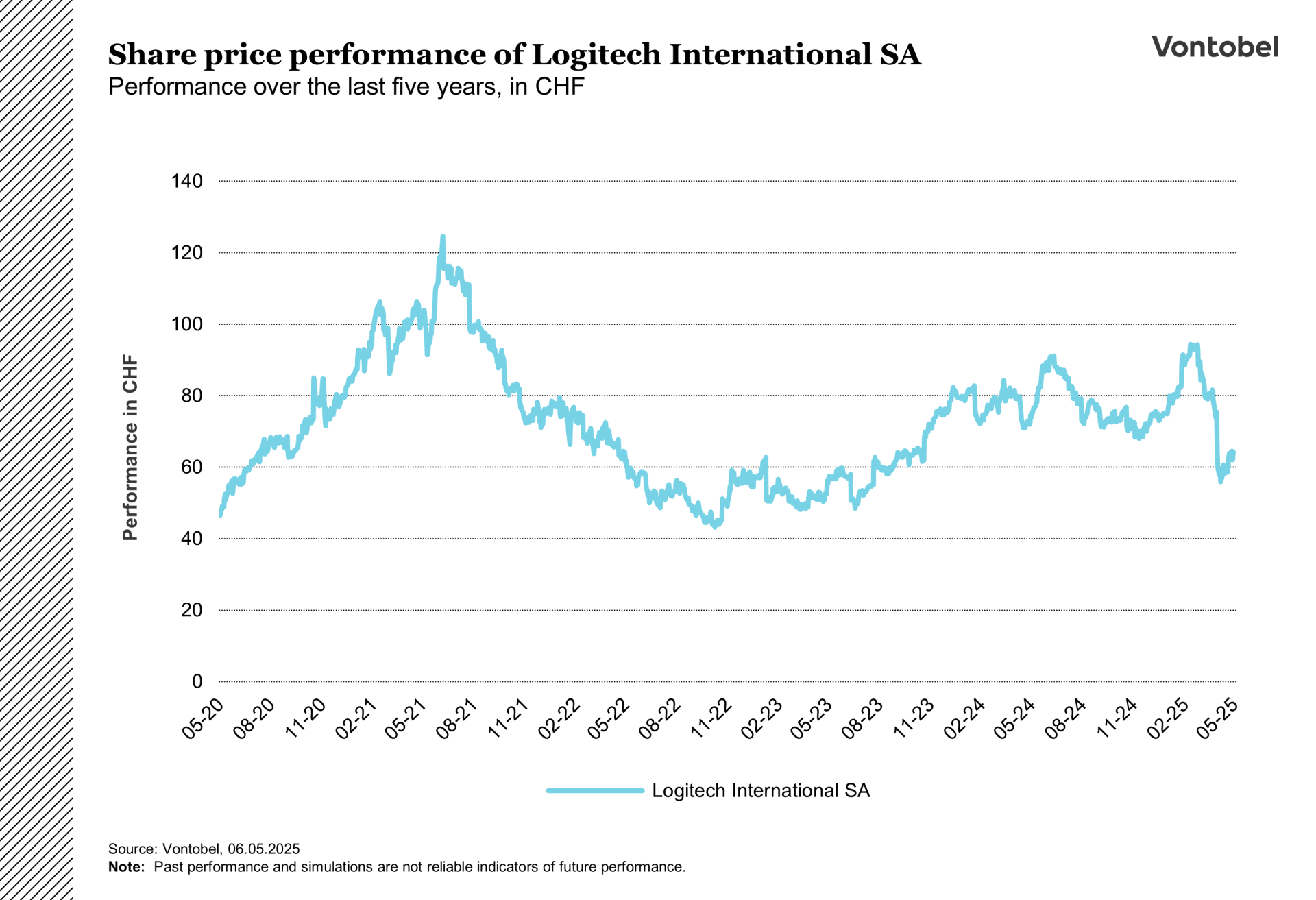Logitech under pressure due to US tariffs

The stock price of the premium manufacturer of peripherals for computers and gaming consoles was hit particularly hard by the market after Trump’s tariff hammer. The reason: Logitech produces many goods in Asia and exports them from there to the United States, Europe, and other markets—exactly the business practice the U.S. President seeks to target. How is the company navigating this challenging market phase?
The announcement of reciprocal tariffs on imports to the United States sent global stock markets into a tailspin, prompting Donald Trump to partially backpedal by announcing a 90-day tariff pause. However, the damage had already been done. For example, the Swiss benchmark index SMI® was only partially able to recover from the tariff shock. Logitech was hit particularly hard. The IT accessories manufacturer had already seen a suboptimal start to the 2025 trading year and now ranks among the biggest losers of "Liberation Day."
Supply chains face major challenges
According to analysts, Logitech produces around 40 percent of its goods exported to the United States in China (cash.ch, April 28, 2025). However, the company had already started preparing the previous year for potential trade barriers between the United States and China by diversifying its manufacturing to alternative production sites, primarily in Southeast Asia. Following Trump’s tariff announcement, it became clear that even countries not previously in the crosshairs of the U.S. government might not be spared.
Moreover, in addition to direct impacts on production conditions, macroeconomic uncertainties could also contribute to a decline in demand for non-essential goods. Consumers who fear rising prices might think twice about whether spending on consumer electronics is sensible. Logitech CEO Hanneke Faber has now decided to suspend the company’s medium-term targets for the time being. While Logitech achieved solid revenue growth of around 6 percent in the past fiscal year and increased its gross margin to 43.5 percent, the highest level since the COVID-19 pandemic, the unpredictability of U.S. tariffs currently prevents any meaningful planning, according to the company.
The share price losses in April and the suspension of medium-term targets underscore how sensitive Logitech is, both in the market and operationally, to the new U.S. trade policy. Analysts also warn that the effects of the new trade barriers may not immediately show up on the balance sheet. In the short term, distributors might increase inventories to safeguard against potential supply disruptions. This effect would delay the visibility of any potential revenue losses.
How the company is responding
Given these circumstances, it is now time for Logitech to take action. In addition to the already initiated production relocations, the company aims to cushion the impact of higher costs through price adjustments and efficiency programs. Logitech has increased prices in the United States by an average of 10 percent since April. According to Hanneke Faber, this measure was necessary to prevent a greater strain on margins. However, price increases may not sit well with consumers. In the highly competitive gaming accessories market, where Logitech has recently experienced strong growth, such measures could prove to be a double-edged sword.
Another opportunity may lie in the flexibility of the manufacturing network. Since Logitech produces many products through contract manufacturers, the company can respond relatively quickly to new conditions and redirect orders to alternative production sites. At the same time, the management could explore whether at least partial production in North America could be established in the medium term to bypass import tariffs. However, this step would require significant investment.

More flexibility in the medium term
Lastly, Logitech is trying to strengthen its position in the B2B business. CEO Hanneke Faber announced plans to expand the company’s business with corporate clients (B2B), for example through investments in video conferencing systems and workspace management solutions. These areas are considered less price-sensitive and could help reduce dependence on the consumer goods business. Additionally, with a new share buyback program of up to two billion U.S. dollars over the next three years, Logitech aims to send a positive signal to investors and demonstrate confidence in its future viability.
Other companies in the consumer electronics sector are also under pressure. Major competitors such as HP, Dell, or Razer are grappling with similar issues: rising costs, weaker demand, and uncertain political frameworks. For Logitech, the key may be whether the company manages to strike the right balance between price increases, innovation, and cost control. The fact that Logitech remained operationally stable in the past quarter despite the challenges offers a glimmer of hope.
